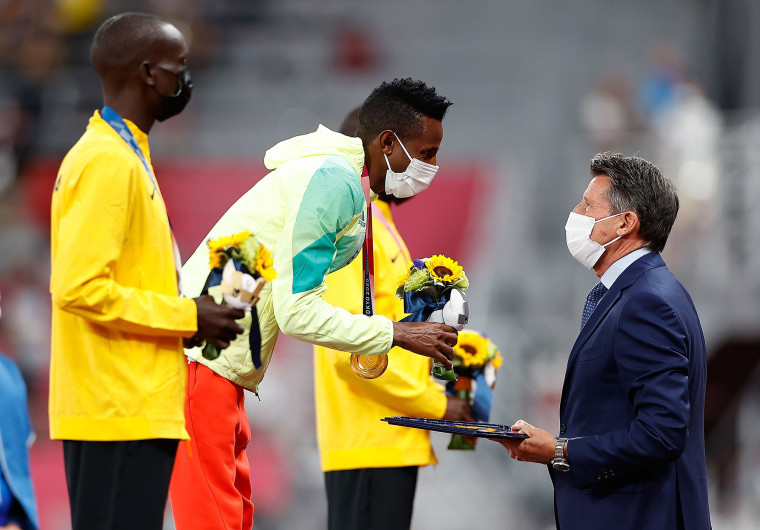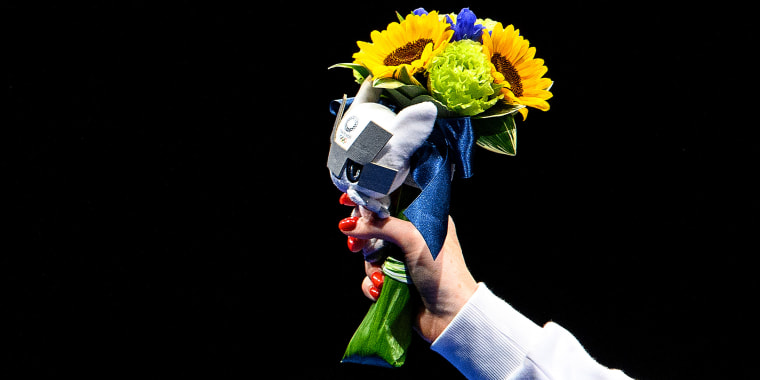Medals aren't the only thing being handed out to Olympians in Tokyo. In addition to new hardware, athletes who make it to the podium are also handed a bouquet of flowers.
But the blooms aren't arbitrary. In fact, every petal has a purpose.
Each flower in the bouquets was grown in one of three northeastern Japanese prefectures that were devastated by the 2011 earthquake, tsunami, and subsequent meltdown of three nuclear reactors, Associated Press reported.
More than 18,000 people died in Iwate, Fukushima, and Miyagi in the March 2011 tragedy and recovery efforts continue today.
"The bouquet is very vibrant in color and I'm glad that it uses flowers from all three prefectures, not just one," Yukari Shimizu, who grows flowers in a Fukushima town that was once entirely off-limits because of radiation, told Kyodo News in May. "The flowers symbolize gratitude to the people from overseas who helped us with reconstruction."

Victory bouquets feature sunflowers from Miyagi, gentians from Iwate and eustomas from Fukushima, as well as a keepsake plush Miraitowa, the mascot of 2020 Tokyo Olympics.
In the northeastern prefecture of Miyagi, parents who lost children in the disaster planted sunflowers on the hill where their children sought refuge from the 2011 tsunami. Every year, the hill is covered in vibrant sunflowers.
In Fukushima, Shimizu began planting flowers in 2014 after the 2013 vegetable crop showed levels of radiation that were unsafe for consumption. Her nonprofit organization, Jin, planted more than 15,000 seedlings of the green-hued eustoma (also known as lisianthus) in anticipation of the Games.
Iwate is known for producing more than half of all gentians in Japan. The blue-indigo flower is the same shade of color as the Olympic and Paralympic emblems.
The 5,000 victory bouquets, created by the Nippon Flower Council, are for both the Olympic and Paralympic Games.
"I want the flowers to send a message that it is possible to overcome hardships, both in sports and in life," Shimizu told Kyodo News.
Related:

